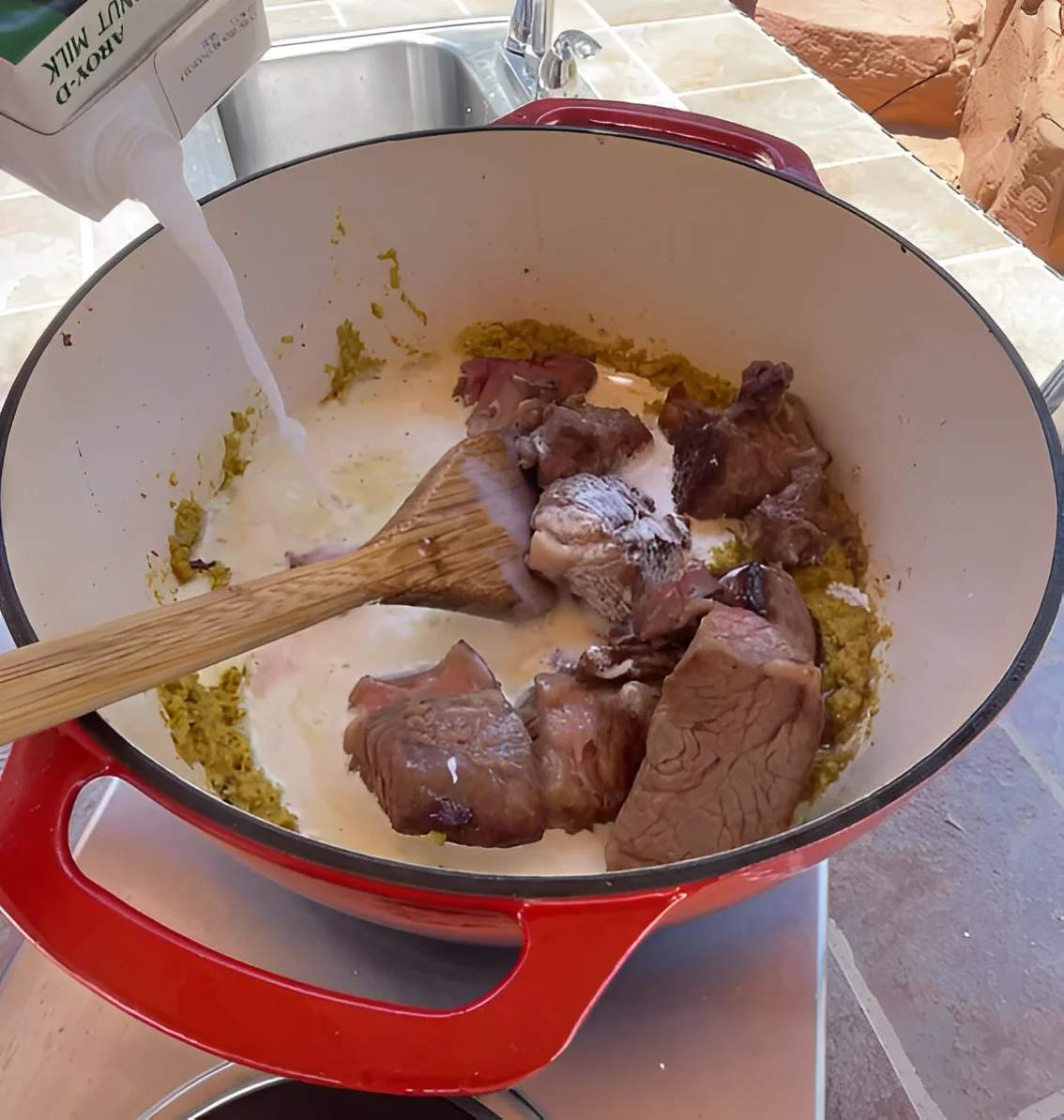Las Vegas Style Tender Beef Rendang Recipe
We may earn a commission from recommended products, at no extra cost to you. See Disclosure.
- Cheesecloth + string
INGREDIENTS
- 3 pounds beef (chuck, short ribs, or in this case, Brian used an end off a rib roast he had in his freezer, cut into large cubes)
- 3 cups coconut milk
- 10-12 kaffir lime leaves, or lime leaves
- 3 stalks lemongrass, bashed with the back of your knife
- 1 cinnamon stick
- 2 star anise pods
- 2 teaspoon coarse salt
- 2 tablespoon oil
Paste:
- 5 shallots
- 1" ginger, peeled
- 1" galangal, peeled
- 1" fresh turmeric, peeled (2 teaspoons powder)
- 5 garlic cloves, peeled
- 2-3 chilies, bird’s eye/Thai chili
- 1 tablespoon cumin
- 1 tablespoon coriander
- 1-2 tablespoons oil
INSTRUCTIONS
- Preheat the oven to 300°F (150°C). Blend all the paste ingredients until smooth, adding just enough oil for it to come together. Set aside.
- Salt the beef and heat up a skillet over medium-high heat. Add 1 tablespoon of oil and sear the beef on all sides. Remove and set aside. Add the paste to the pan and sauté until the moisture is gone and the paste starts to turn a light brown color.
- Add the beef back in, cover with coconut milk. Add the lime leaves, lemongrass, and remaining spices (tie spices up in a cheesecloth pouch for easier removal later). Cover with a lid and bake for 90 minutes.
- Remove the lid and place back in the oven to allow the liquid to reduce and thicken, creating a thicker “sauce” that caramelizes the meat. This will take about 2-3 hours. Make sure to watch it carefully and stir occasionally. Serve with steamed rice and garnish with red chili and cilantro.

FAQ
What is beef rendang made of?
Beef rendang is a traditional Indonesian dish made with tender chunks of beef slow-cooked in a rich blend of spices and coconut milk. The dish is simmered for hours, allowing the flavors to intensify and the meat to become incredibly tender. With its complex blend of spices, creamy coconut undertones, and a hint of tanginess, this popular dish is a truly delightful and aromatic culinary experience.

Why is it called rendang?
The term “rendang” is believed to come from the word “merandang” or “randang,” which means “slow cooking” or “to cook slowly” in the Minangkabau language of West Sumatra, Indonesia. This refers to the traditional cooking method of simmering the beef and spices for an extended period of time over low heat until the sauce thickens and the meat becomes tender. The slow cooking process allows the flavors to develop and intensify, resulting in the rich, aromatic, and deeply flavored dish known as rendang. Over time, the name “rendang” has become synonymous with this iconic Indonesian curry dish enjoyed worldwide.

What do you eat with beef rendang?
The most common and traditional way to serve beef rendang is with steamed rice, which helps to absorb the delicious sauce. Additionally, you can pair it with fragrant jasmine rice or even coconut rice for an extra layer of flavor. Some people also enjoy beef rendang with flatbreads like roti or naan, which are perfect for mopping up the savory sauce. To balance the richness of beef rendang, it is common to serve it with fresh cucumber slices or a refreshing side salad. The combination of beef rendang with rice or bread, along with a light side, creates a satisfying and well-rounded meal.

Which cut of beef is best for this recipe?
The best cut is typically a tougher and more flavorful cut that benefits from the slow-cooking process. Cuts such as chuck roast or beef shank are commonly used in rendang recipes. These cuts have a good amount of connective tissue, which breaks down during the long cooking time, resulting in tender and succulent meat. The marbling and collagen in these cuts contribute to the richness and depth of flavor in the rendang. It’s important to choose a cut that can withstand the prolonged cooking process without becoming dry or tough, allowing the meat to soak up the aromatic spices and coconut milk while becoming tender and flavorful.

What are some variations of beef rendang recipe?
Beef rendang has various regional and cultural variations. Chicken rendang replaces beef with chicken, offering a lighter flavor. Lamb rendang uses lamb meat for a hearty and gamey taste. Dry rendang, also known as serundeng, is cooked until the sauce is reduced and caramelized, resulting in a drier texture with a toasted coconut coating. White rendang omits red-colored spices, resulting in a lighter-colored dish. Seafood rendang incorporates prawns or fish, while vegetarian/vegan rendang replaces meat with tofu, tempeh, or vegetables. These variations showcase the versatility of rendang, accommodating different protein choices and dietary preferences while maintaining the dish’s rich and aromatic flavors.

